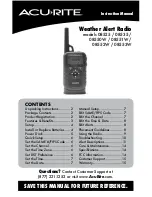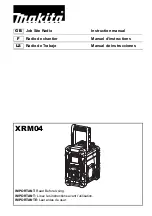
In this simple cable replacement application with repeater, the radio system still knows all data originating at one end must be transmitted to the
other end. In this application, there are no serial devices connected to the repeater(s). The system still corrects for transmission problems, but it
takes time to repeat the message. The network delay is double that of a system with no repeater.
• Master configuration route to slave: DIP switches 2 OFF, 3 OFF, 4, ON
• Repeater configuration: DIP switches 2 ON, 3 ON, 4 OFF
• Slave configuration route to master: DIP switches 2 OFF, 3 OFF, 4 OFF
Broadcast Mode Configuration
Figure 4. Star network
Master
Slave
Slave
Slave
Slave
Slave
Slave
In this more complex star topology, the master radio at the center of the network can communicate to many slave radios. A common example would
be a PLC at the center communicating with many remote I/O systems. The star topology is slower than a point-to-point network, but faster than a
tree network.
• Master configuration to broadcast to all devices: DIP switches 2 ON, 3 OFF, 4 ON
• Slave configuration to route to master: DIP switches 2 OFF, 3 OFF, 4 OFF
Figure 5. Tree network
Master
Slave
Slave
Repeater
Slave
A tree network using MultiHop radios is the most powerful wireless system possible; many repeaters and slaves can be combined to cover vast
areas and get around hills or buildings. In the other networks, the wireless "hops" are minimized. In this system you can "hop" as much as you need
to, but the trade-off is speed. This is the slowest of the network layouts.
• Master configuration to broadcast to all devices: DIP switches 2 ON, 3 OFF, 4 ON
• Repeater configuration to broadcast to all devices: DIP switches 2 ON, 3 ON, 4 OFF
• Slave configuration to broadcast to all devices: DIP switches 2 ON, 3 OFF, 4 OFF
Important: Star and tree topologies use a Broadcast radio technique. Broadcasting allows for many radios and large complex
systems but also introduces a small chance that a data packet can be lost. These networks topologies require the control
system to automatically resend missing data packets. Most control protocols (like Modbus) will work fine. Other serial stream
based protocols may not be as tolerant and should only be used with point to point topologies.
Apply Power
The R70SR Serial Data Radio is fitted with a 5-pin M12 connector for fast installations. Use straight splitter cordsets to connect multiple devices and
power to the R70SR Serial Radio. For a list of splitter and cordset options, see
on page 6.
Sure Cross
®
R70SR Serial Data Radio
P/N 224673 Rev. B
www.bannerengineering.com - Tel: + 1 888 373 6767
3


























